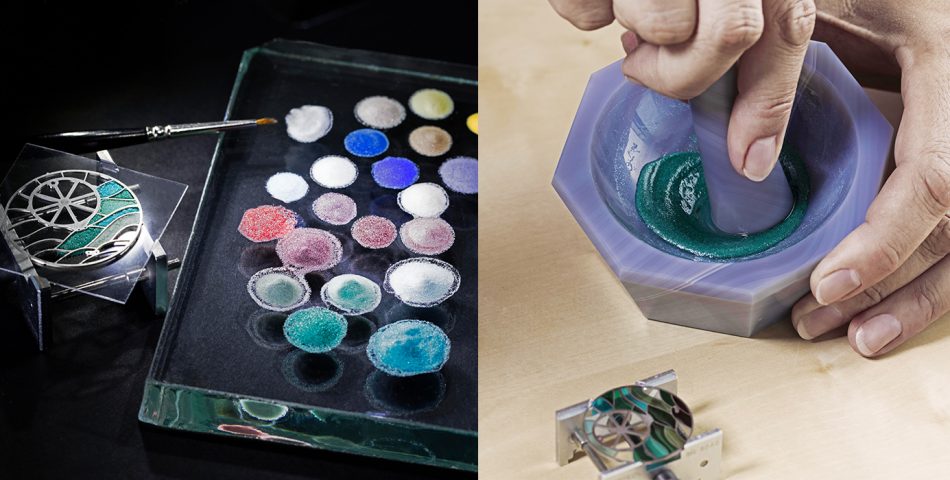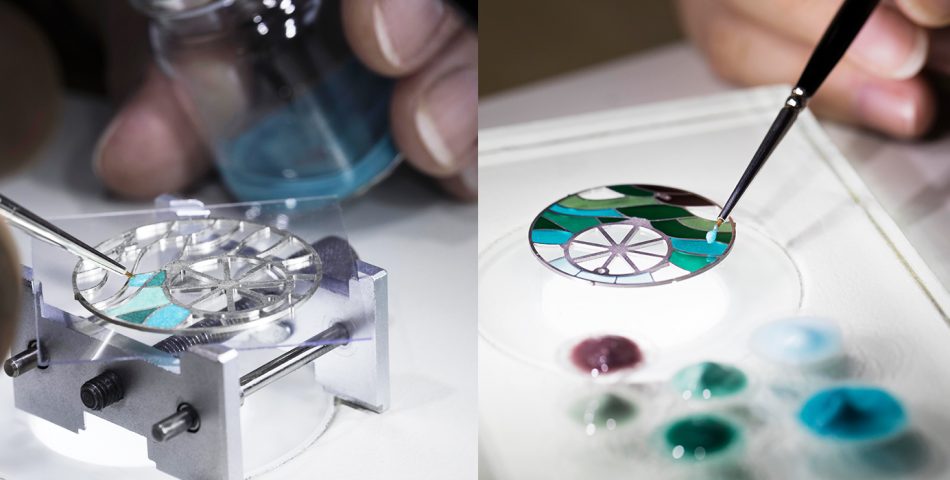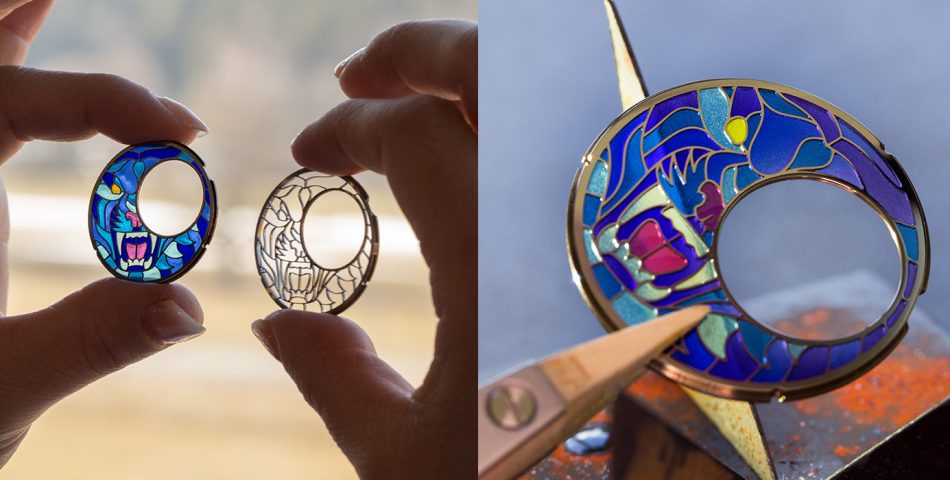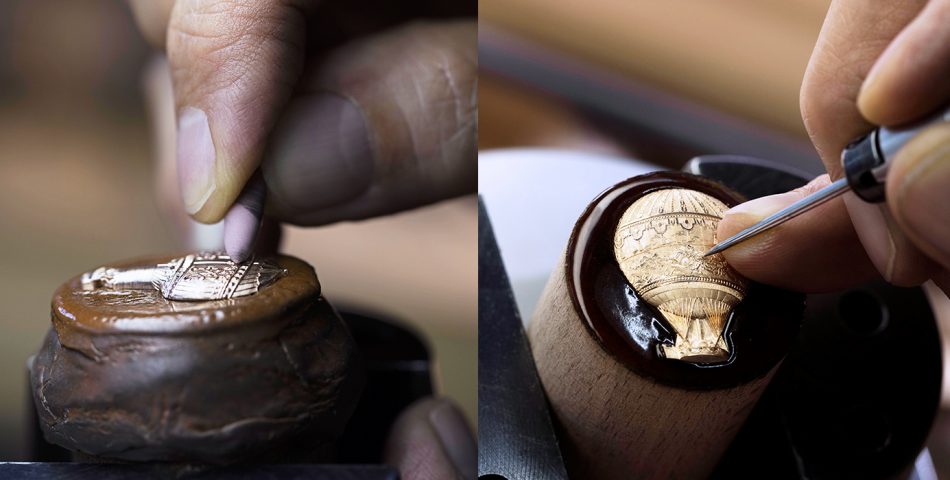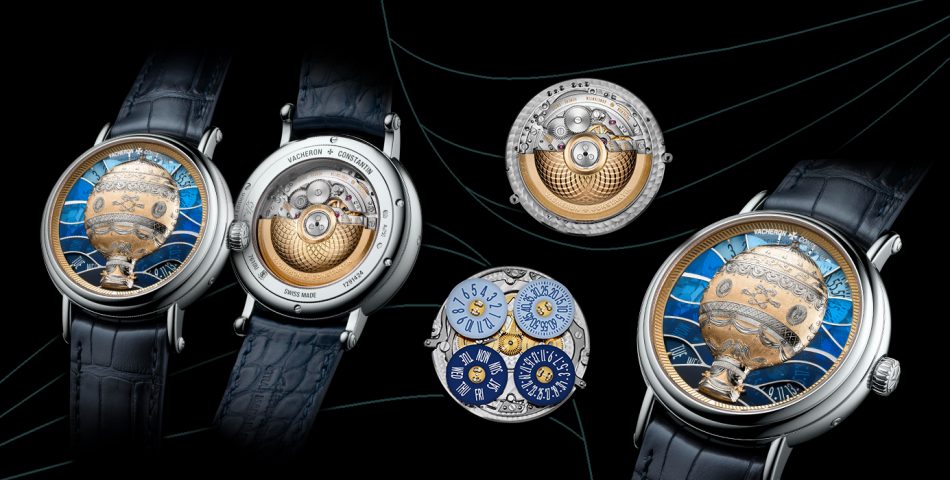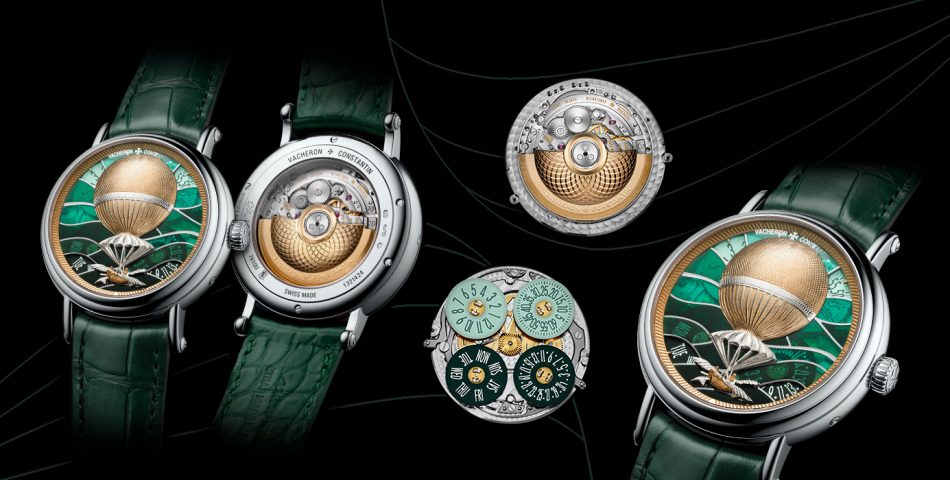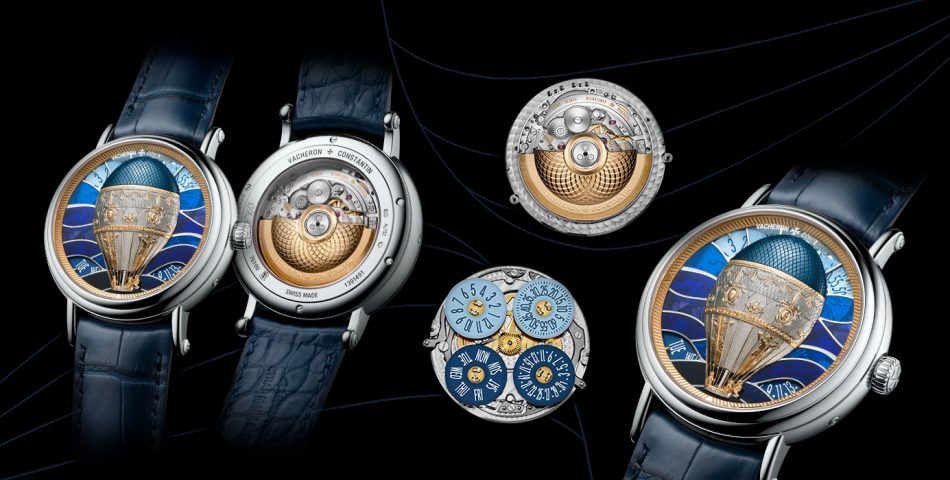Is it a watch, or is it a work of art? Both, as watchmakers are utilising a diverse range of Métiers d’Art to adorn watch dials. We break down the traditional craftsmanship techniques that are being harnessed.
Enamelling
If you’ve seen the word “email” on a watch dial and wondered why Jaeger-LeCoultre or Ulysse Nardin are paying tribute to our preferred method of electronic correspondence, it’s not what you think it is. Email is actually French for enamel, a traditional method of decoration used to beautify dials.
This long and tedious technique consists of applying a viscous liquid made of soft glass onto a dial with a goose quill. The dial is then heated repeatedly at high temperatures to achieved the desired colour and viscosity. Should the artisan make a wrong move, or heat it a little too long, the enamel can crack or produce gas bubbles, and he or she will have to restart the entire process from scratch.
There are several forms of enamelling that are typically seen on watch dials, namely grand feu, grisaille, plique-à-jour, champlevé and cloisonné.
To celebrate its 280th anniversary of creating watches that are beautiful inside out, Jaquet Droz has released the Petite Heure Minute Smalta Clara, featuring a dial made of plique-à-jour enamel. Essentially, this technique resembles a stained glass window, as there’s no metal backing and gold wires are used to separate different sections. It takes the artisan four days to produce a single dial.
At Vacheron Constantin, enamelling skills have been perpetuated for the past three centuries; once again, the watchmaker impressed with the Métiers d’Art Villes Lumières timepiece, that features the aerial view of Beijing depicted on the dial using champlevé enamelling. This means that the metal is carved and filled in with the enamel colour. If you’re wondering where the iridescent glow comes from, the brand has worked with artist Yoko Imai who hand applied powdered precious metals to the enamel.

The diminutive size of a watch dial presents a challenge to enamellers, but with cloisonné enamel, the difficulties are upped even further as each section is demarcated by a golden wire, no larger than a strand of hair. The Van Cleef & Arpels Lady Arpels Jour Nuit Oiseaux best showcases this technique with the vivid depiction of the bird of paradise perching atop a splendid panorama. The dial makes a complete rotation as the day goes by, and night time is rendered in blue enamel studded with a diamond-studded moon and stars.
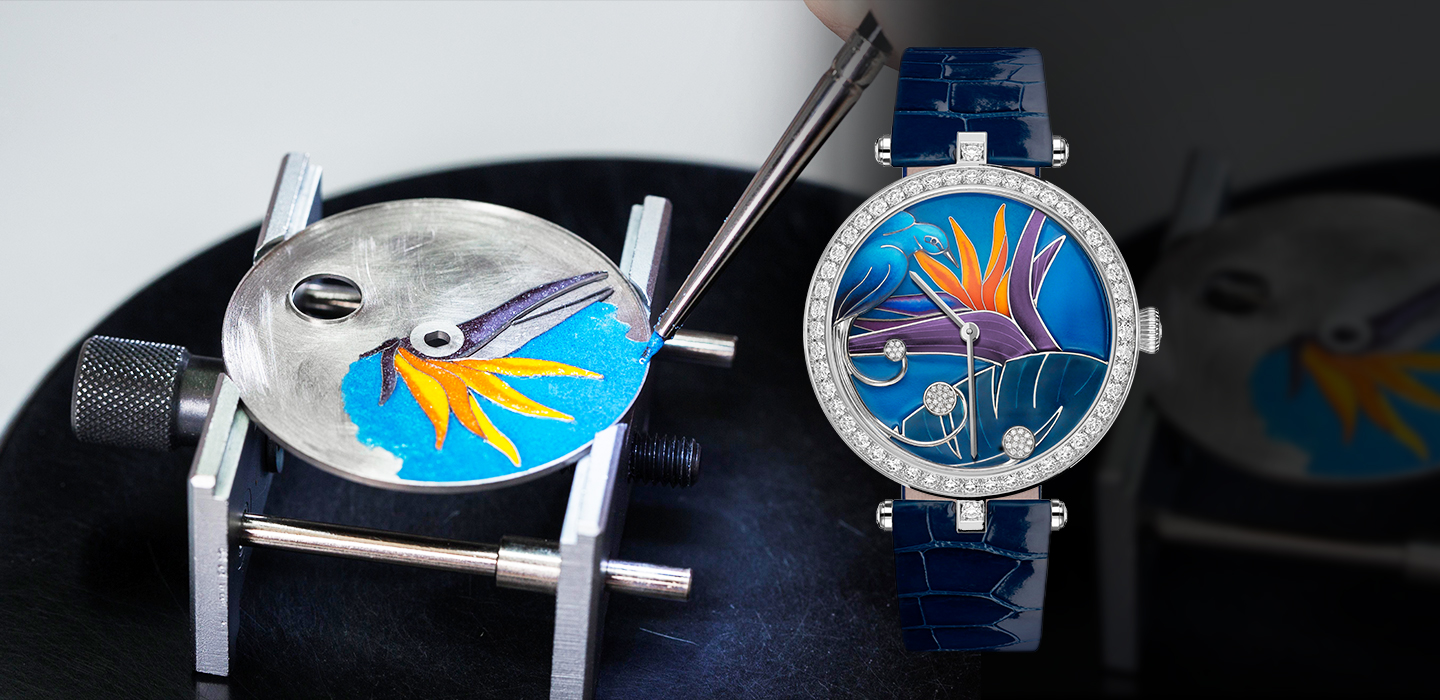
Engraving
Amalgamating jewellery making with watchmaking is the art of engraving, where raw metal is transformed into a work of art. Essentially, an artisan uses a burin to shave off the metal and carve the desired motif. It’s a skill that requires a lot of patience and dexterity, as the artisan needs to be mindful about shaving off just the right amount of metal; too much, and it’ll ruin the already-thin dial, and too little, and the 3D effect will be lost.
Watchmakers such as Jaeger-LeCoultre, Vacheron Constantin and Piaget have employed the art of low-relief engraving to create artistic canvases that depict all manners of motifs, from flowers to even hot-air balloons.
About three weeks of craftsmanship were required to engrave each hot-air balloon in the Vacheron Constantin Métiers d’Art Les Aérostiers collection, which was inspired by the adventurous spirits of 18th-century balloonists. The engraved balloon sits on a plique-à-jour enamel dial, which frame the jumping hour indications at 2, 4, 7 and 11 o’clocks.
Vacheron Constantin Métiers d’Art Les Aérostiers collection
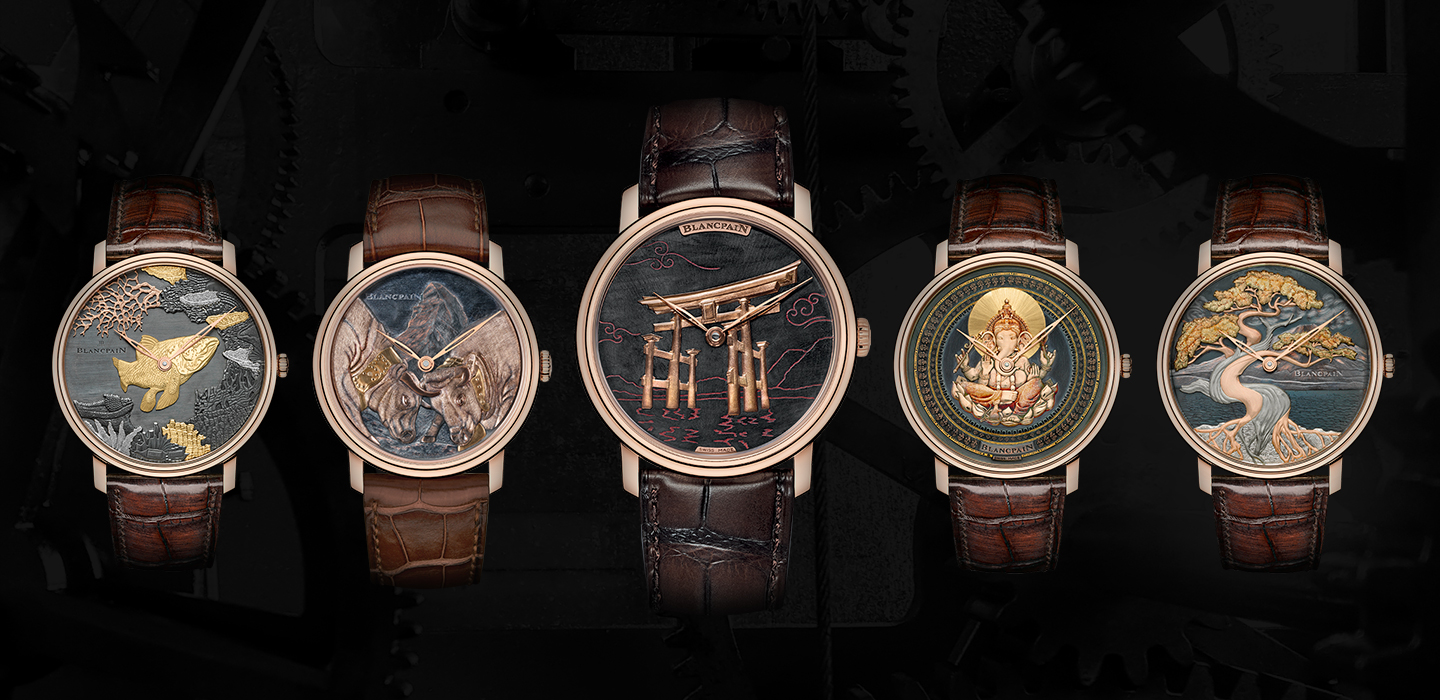
Feather Marquetry
The plumes of birds have long fascinated artists, who’ve utilised colourful feathers as artistic tools.
Watchmakers, too, have not been able to resist this wonderful repertoire of plumage and have turned to skilled artisans who specialise in feather marquetry. In France, there are only a dozen trained feather artists, including Nelly Saunier, who has previously worked with Van Cleef & Arpels, and Emilie Moutard-Martin, who created a watch in collaboration with Piaget.
Dior broke all convention when it decided to place the oscillating weight dial-side, in all its glory for all to see. The Dior Grand Bal takes its inspiration from its haute couture ballgowns, where the oscillating weight, which is set with feathers, takes pride of place again the sun-brushed, golden dial.
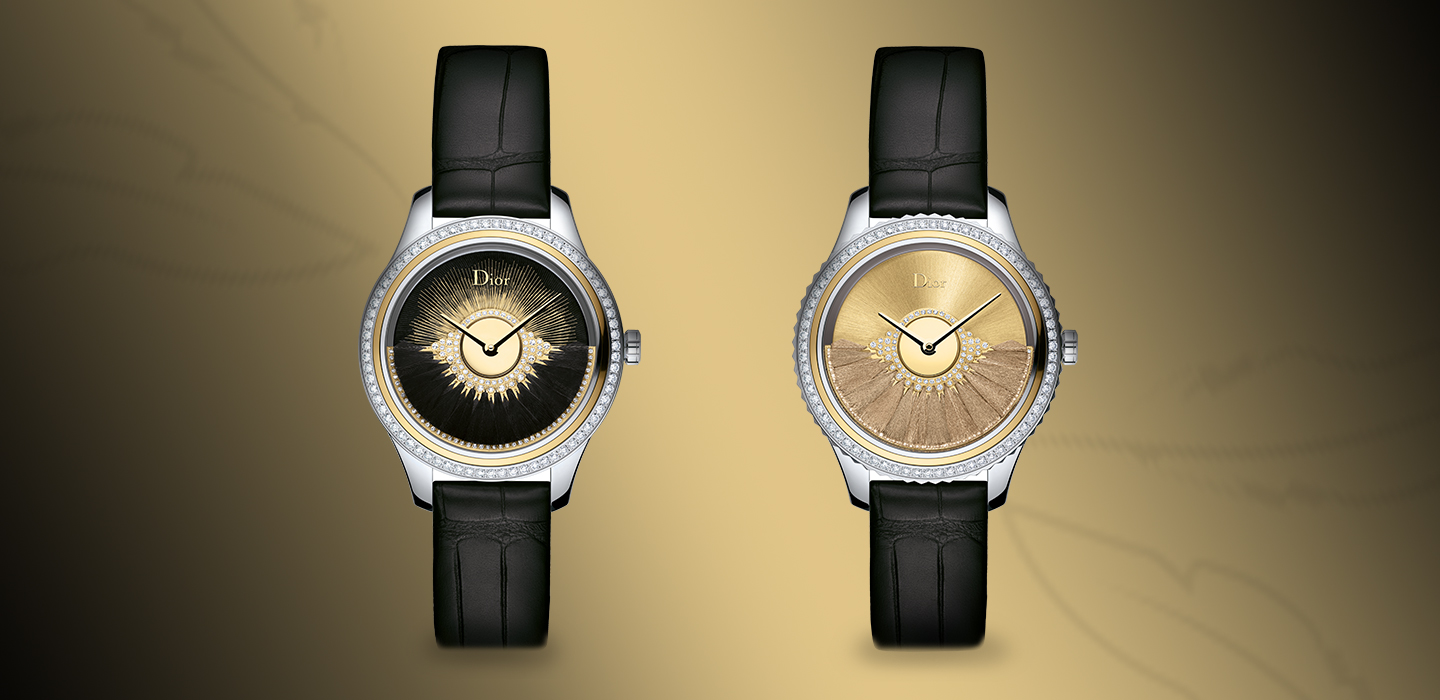
The realistic bird depicted on the dial of the Van Cleef & Arpels Lady Arpels Colibri Indigo is made of feathers. The bird takes flights against a background made of lepidolite, jade, variscite and sprinklings of diamonds.

Wood Marquetry
Where feather marquetry uses carefully cut pieces of feather to form a distinctive pattern, wood marquetry follows the same philosophy with, you guessed it, wood. This technique has existed since the 16th century, but it was only about 10 years ago that watchmakers have appropriated it on watch dials. Different tints and types of woods are used in this artistic technique, serving as different colours and shades. Of course, it’s not just wood that can be used in marquetry, as watchmakers have been turned to materials like eggshells, mother-of-pearl, and even precious stones.
Kicking things up a notch is the Cartier Ronde Louis Cartier watch with wood and gold marquetry that, as its name suggests, features a panther head that’s been delineated with Macassar ebony and gold leaf. The Macassar ebony is placed on top of 24K gold leaf, and is then whittled down by the artisan to attain the silhouette of the panther’s head.
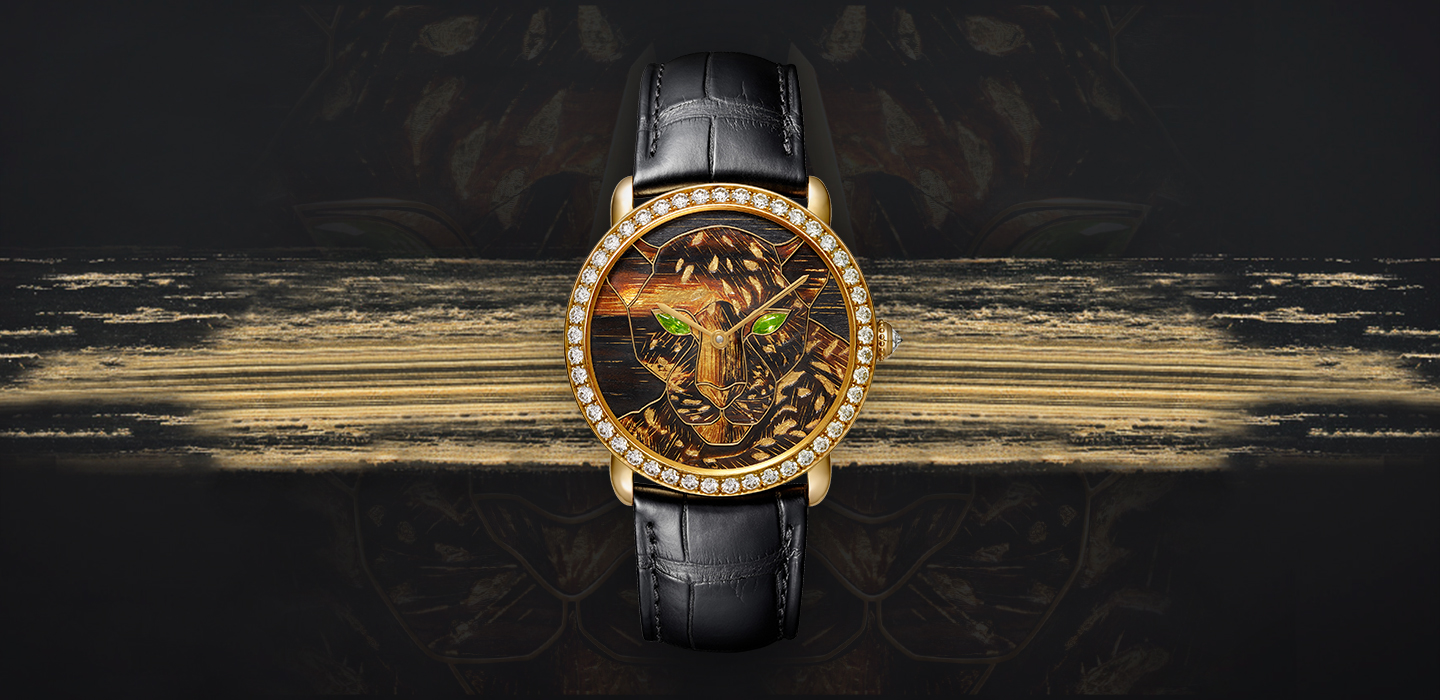
Related links:
The Watch Starter Pack for Women


